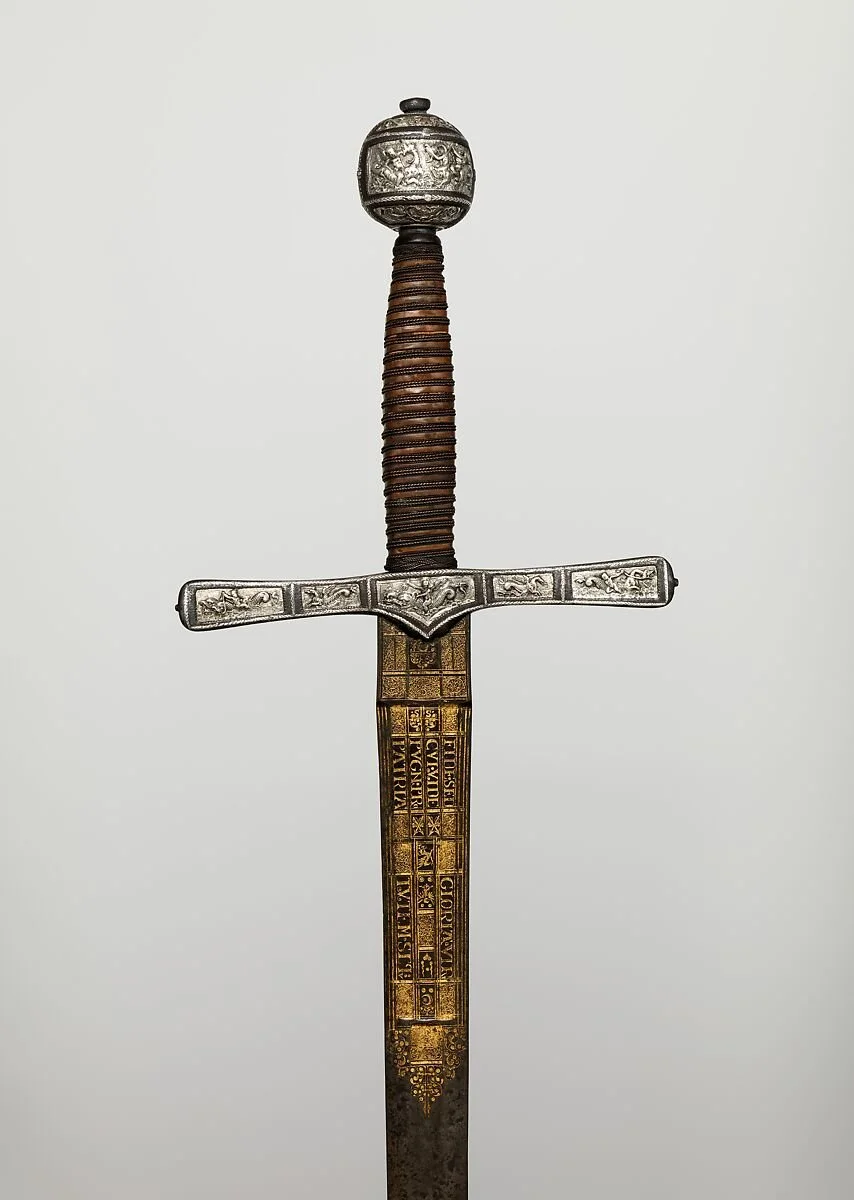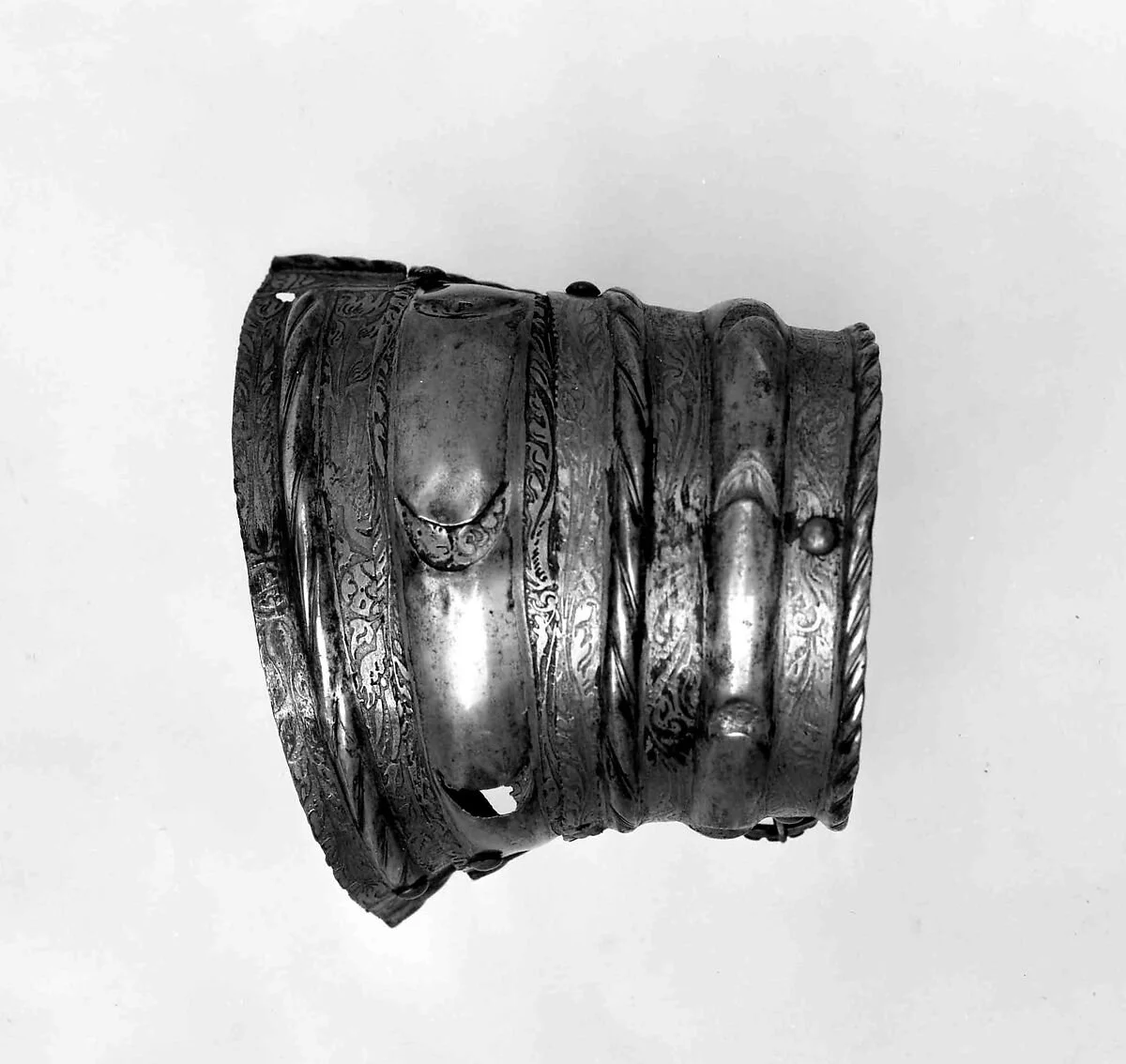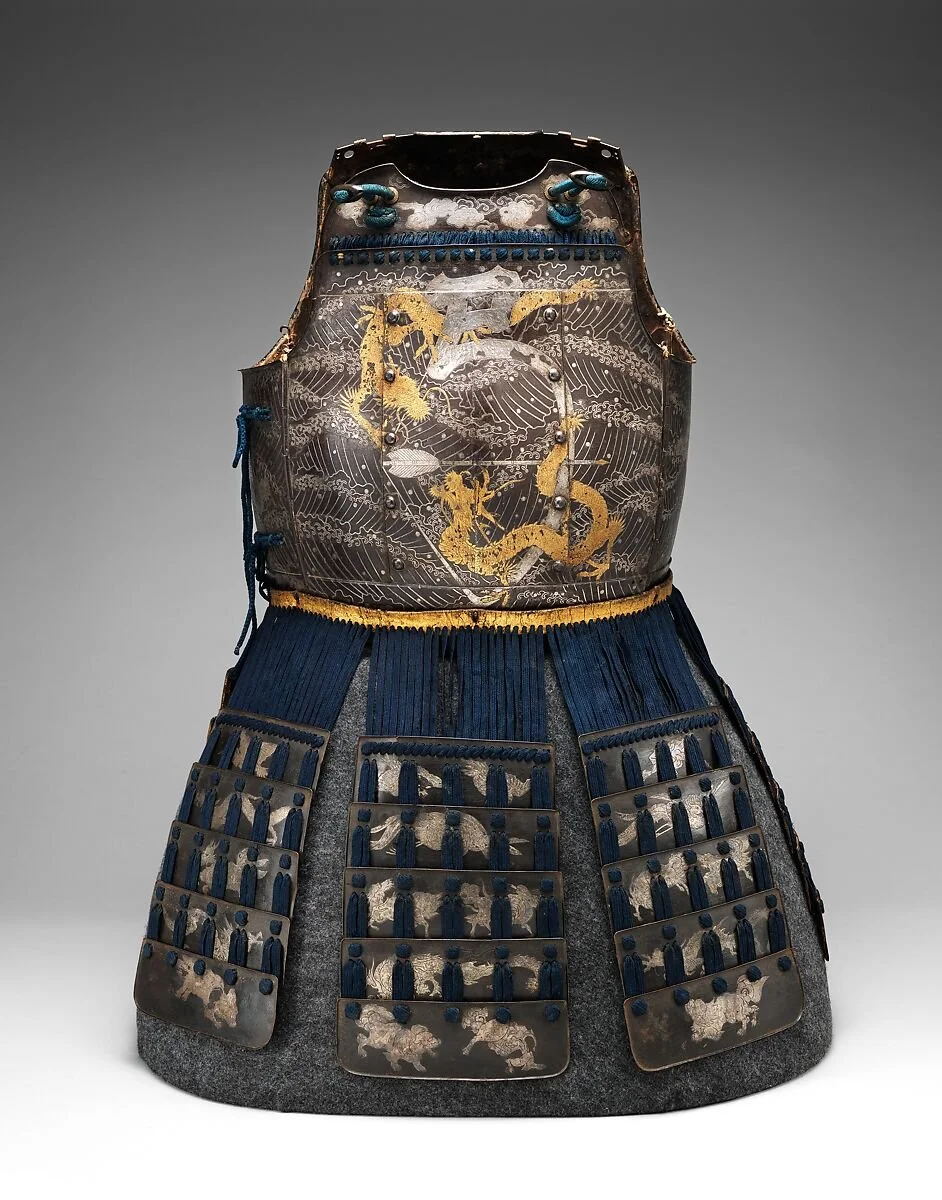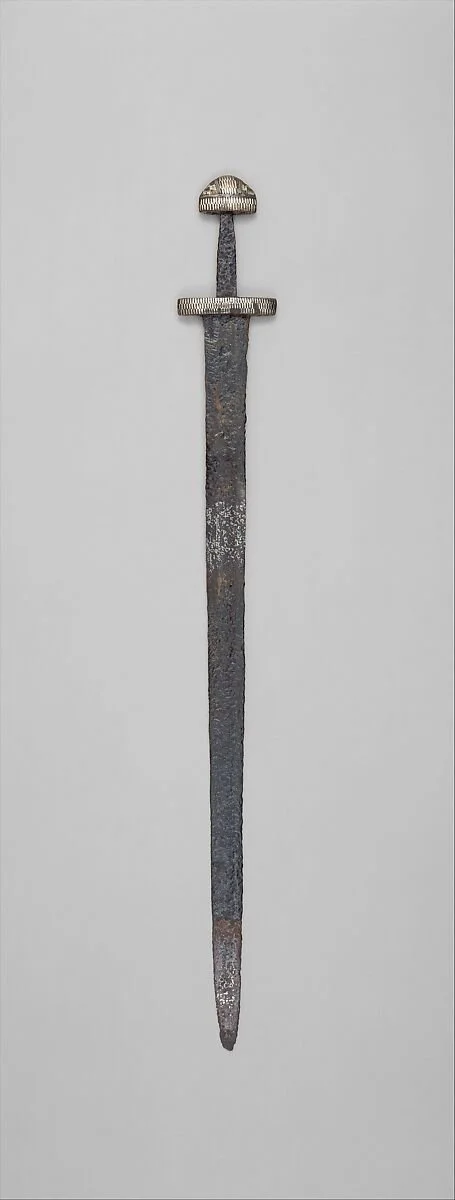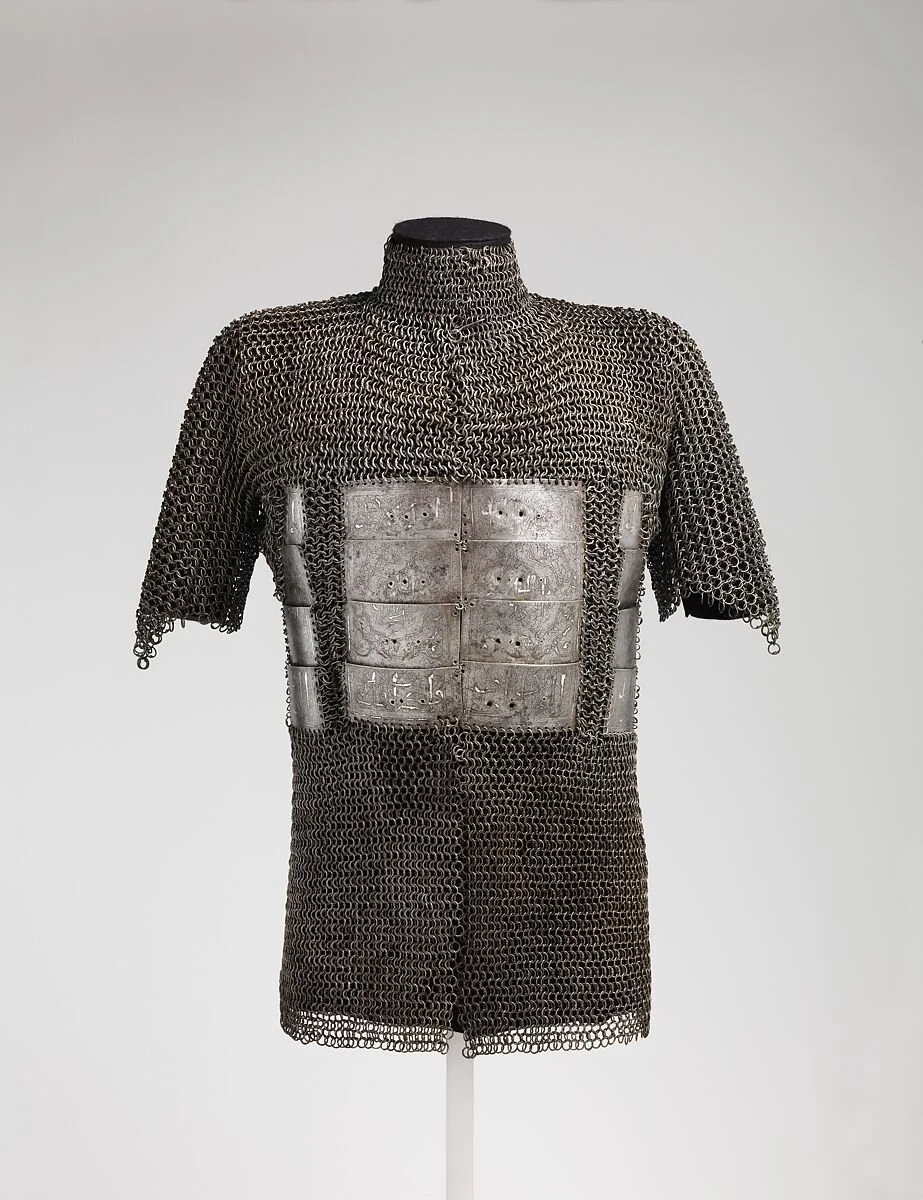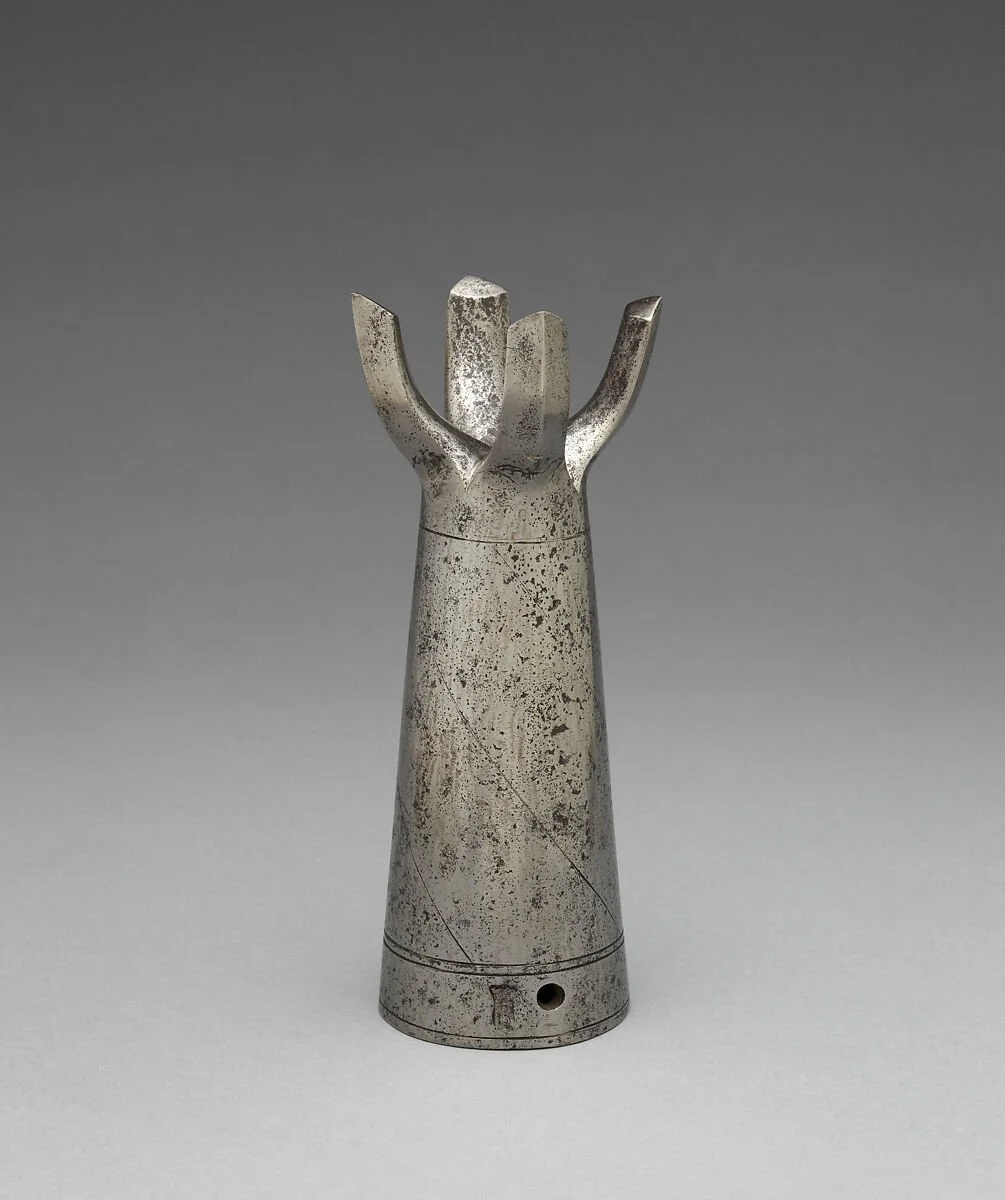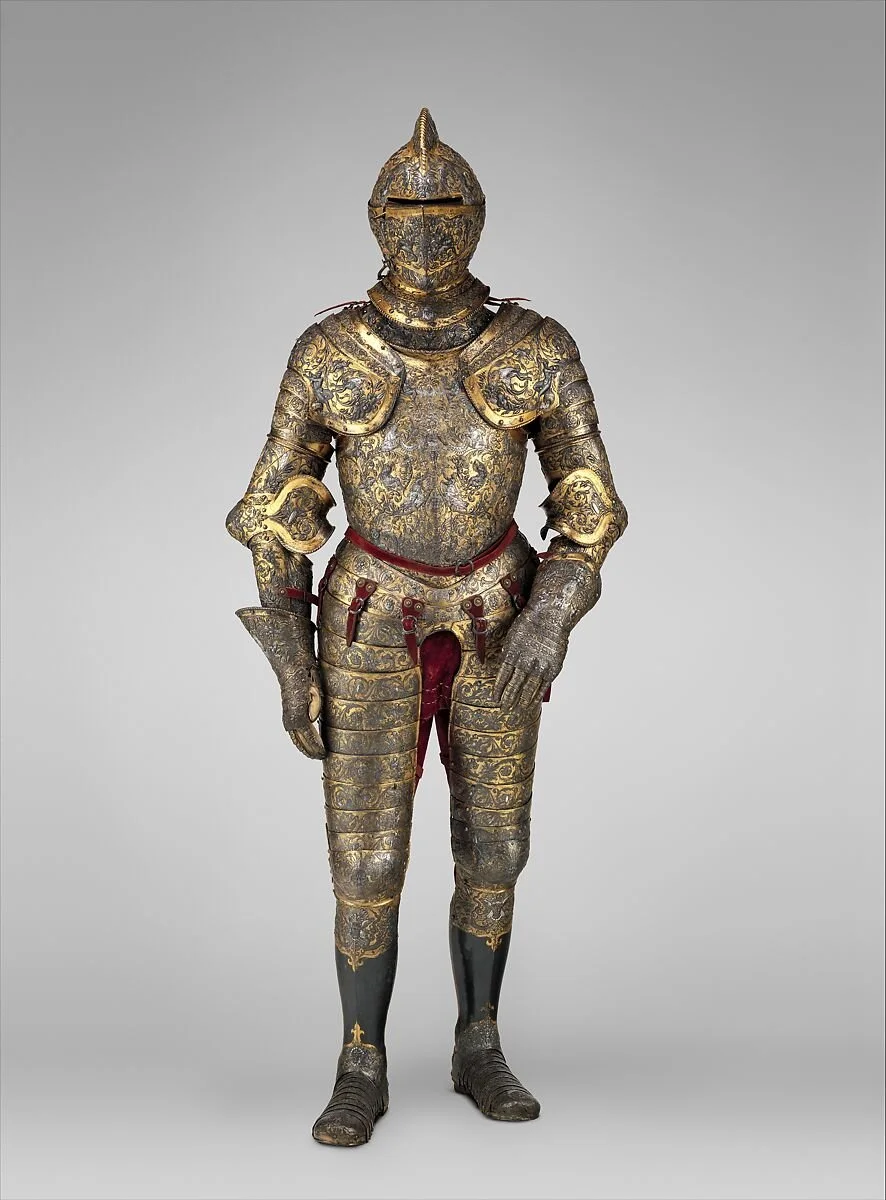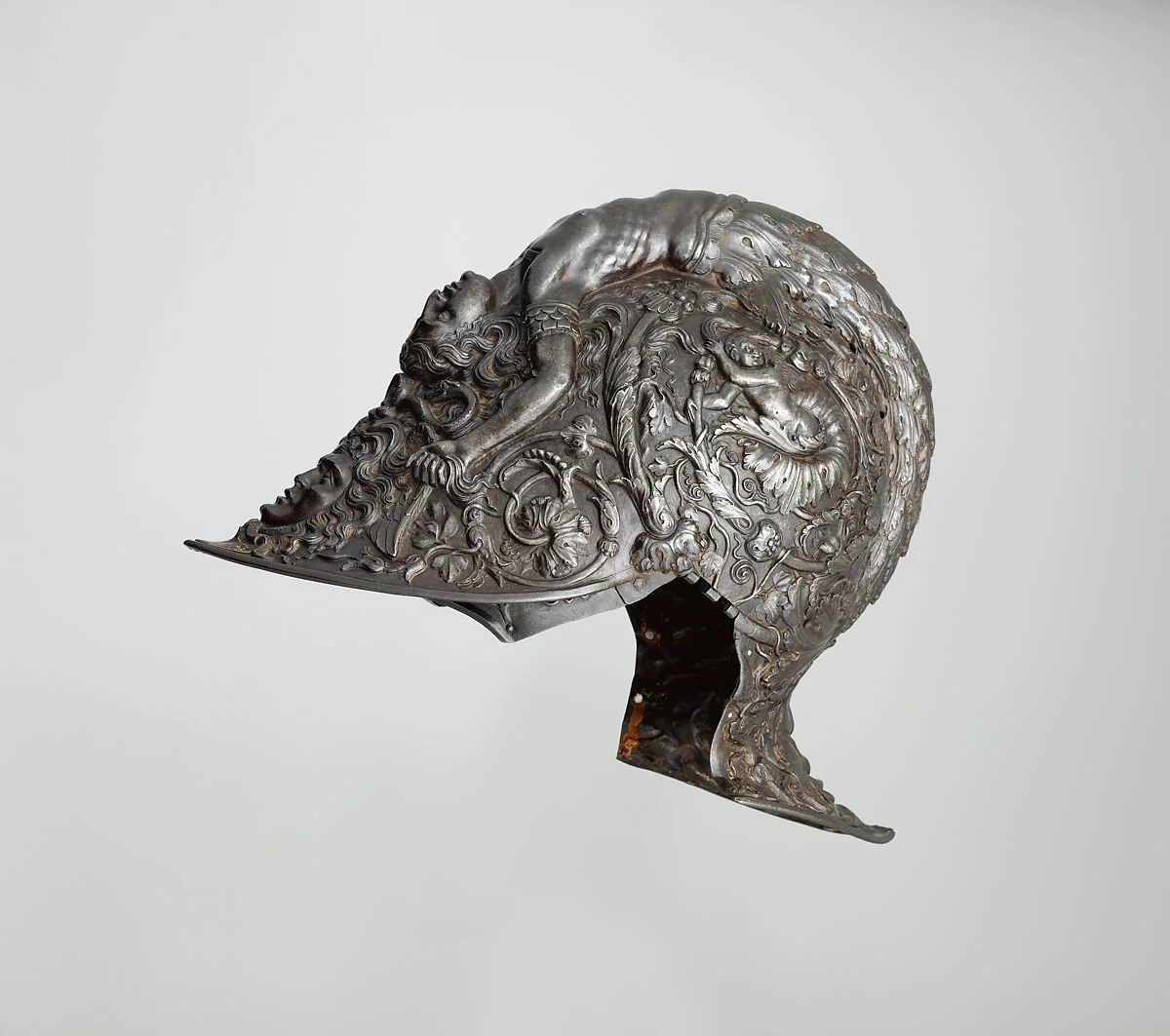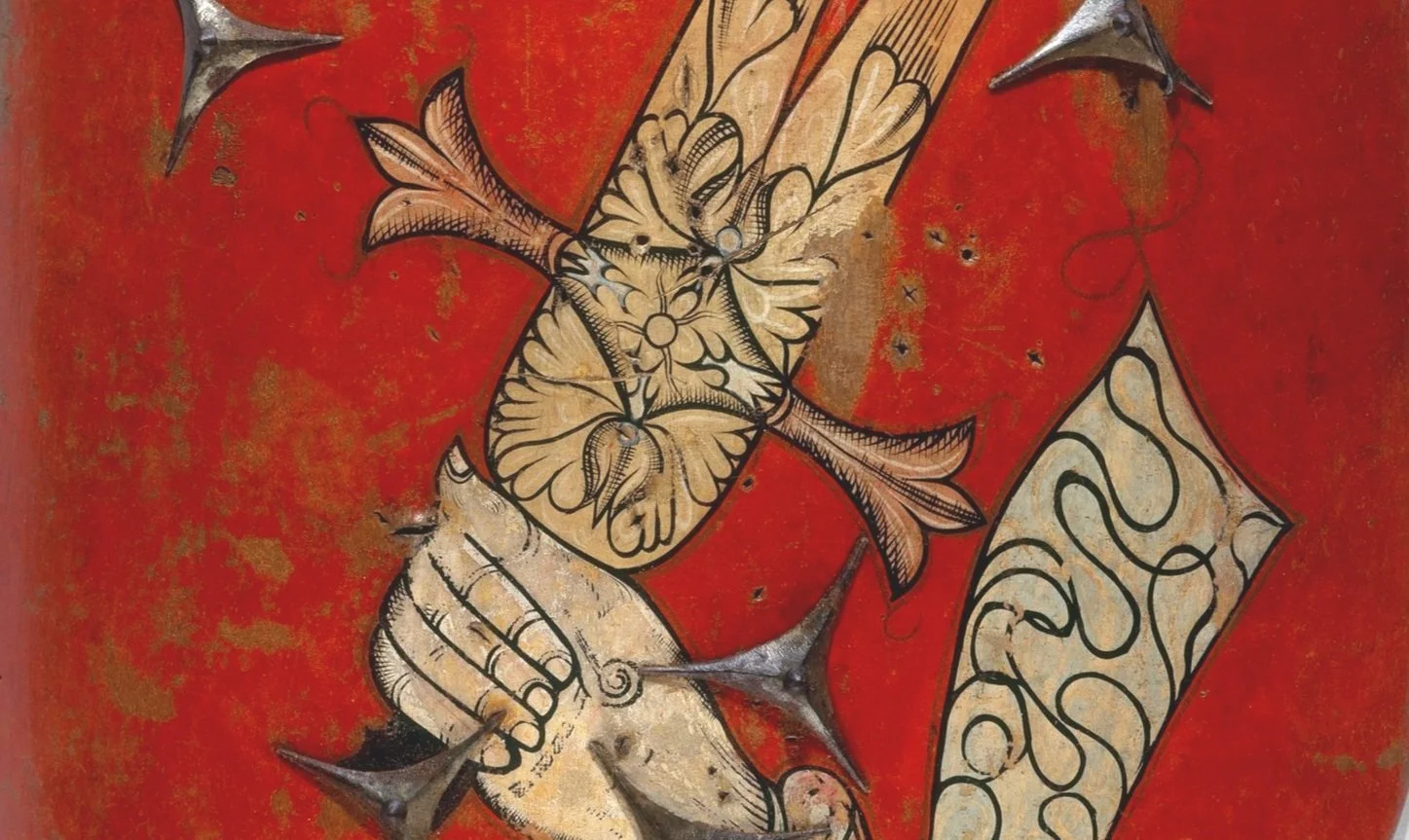
Welcome to the Fall 2025 Issue of Metphrastics, Arms & Armor. We were overwhelmed with strong submissions to our first gallery-specific prompt and inspired by the myriad ways poets related to these sometimes cold, forbidding objects. We have poems by Sharisa Aidukaitis, Khayelihle Benghu, Kate Copeland, Gregory Crosby, Cailín Frankland, Elizabeth T. Gray, Jr., K. L. Mill, Amanda Quaid, Kaila Schwartz, Davis G. See, and Ariel Stemple responding to armor and weaponry from China, Japan, Germany, France, Spain, Austria, Turkey, Scandinavia, and the Netherlands. Our featured poet is Khayelihle Benghu, who is interviewed at the end of the issue. We hope you enjoy reading it as much as we loved putting it together. Thank you again to all who submitted!
Our next issue, coming out in January, is open to all submissions. No theme. Please see our Submissions page for more info, and submit by December 15.
Metphrastics is independently funded. If you would like to make a tax-deductible donation to support our work, please visit Donate.
Note: to comply with copyright law, some artworks are not pictured on this site. Please click the link below the author’s name to view the work.
What His Mother Said to His Girlfriend
Elizabeth T. Gray, Jr.
Of course he brought you here.
He needed you to know
how the young men fought
at Acre, how they protected pilgrims
to the Holy Sepulchre, how
he rode with the king’s son
beneath the walls of Toulouse and Béziers
after school or when it rained.
Before he could lay it at your feet
he had to find it
again, here, perfectly-lit,
peerless, so you would know,
amidst all this damascened steel,
which named blade was his.
Elizabeth T. Gray Jr. is a poet, translator, critic, and corporate consultant. Recent poetry collections include After the Operation (Four Way Books) and Salient (New Directions). She lives in New York City and raised her identical twin sons at the Met.
Cross Hilt Sword
Blade signed by Clemens Horn, German 1600–1625
Philip II
Cailín Frankland
he plays at war, the child.
steel and gold and copper alloy
cover his scapula and clavicle,
coat the meat and marrow
of his thigh—he lunges into palacio air,
toppling some unseen enemy
with a jubilant strike. the boy will ascend
the throne one day, the archduke muses
with a silent nod, it would do him well
to learn to fight.
but fifty-six years later,
it will not be war that kills the child.
steel and gold and copper alloy
cannot shield a body from its shadow,
cannot render the cancerous benign.
weak and weapon weary, his costume armor
long outgrown and real armor cast aside,
the boy listens for the liturgy, calls the priest
to his bedside. as an old man, playing
at prayer—this is how the king will die.
Cailín Frankland (she/they) is a British-American writer and public health professional based in Baltimore, Maryland. Their cultural criticism, poetry, flash fiction, and short fiction have been featured in numerous print and online publications. They live with their spouse, two old lady cats, a rotating cast of foster animals, and a 70-pound pit-bull affectionately known as Baby. You can find them on X as @cailin_sm.
Portions of a Boy's Costume Armor
Armorer Hans Seusenhofer, Austrian
1532
Prayer to Shachihoko
Ariel Stemple
I cannot see through the rain
turning the skies gray
and cold as the northern ocean
my enemy lumbers through the fog
like a drunk searching
for his next cup
I cannot see him,
where to strike him
where is his throat, his heart, his eyes?
he is no more than a shape,
a lump, floating
in this freezing soup on the plains
I pray to Shachihoko
all the rain you gifted
to my father’s burning house
swallow it up again,
clear these skies
so my arrow can soar
if I see him, I will strike him
if I strike him, he will fall
if he falls, I will go home
to gaze once again
upon the golden Shachihoko
that protects us from fire
Ariel Stemple is a published author and poet based in Minneapolis, Minnesota. They have an MFA in Creative Writing from Augsburg University.
Cuirass (Armor for the Torso and Hips) and Greaves (Lower Leg Defenses)
Japanese, probably late 18th–early 19th century
We Will Not Lower Our Voice
K. L. Mill
the clang of steel sang
across blood-soaked field,
battle-sweat and spilled entrails
hanging thick in the air.
amid the mayhem,
two warriors dueled,
broadswords breathing thunder,
spiraling in their death-dance.
with every Saxon thrust,
the Viking parried,
blades locked,
destiny’s thread stretched taut.
one lucky arc —
the Saxon’s weapon hooked
adversary’s helmet,
knocking it to earth.
fiery tresses spilled free.
his eyes flashed wide at the sun burst of hair—
the shield-maiden severed his shock
in one powerful swing.
gore-crowned, god-wild,
she howled with the fury
of a thousand Valkyries.
K. L. Mill is a voice actor who writes fiction that’s short and a little strange. Like herself. Most recently her work has been published by Small Wonders, Cursed Morsels and Crepuscular Magazine.
Viking Sword
European, probably Scandinavia
10th century
Toxophilite
Sharisa Aidukaitis
after Archer’s Ring, signed by ivory carver When Zhao
While chirping swallows gather
Far from the fields of war,
Trained thumbs release swift death
As piercing arrows soar;
Poetic contradiction—
Assassin’s flaunted ring;
As if its beauty really could
Exonerate death’s sting
Sharisa Aidukaitis is a writer and college educator in upstate New York. Her poems have appeared or are forthcoming in Penstricken, Moss Piglet, The Quarter(ly), Drifting Sands Haibun, Sublimation, and elsewhere.
Ekphrastic on a Shirt of Mail
Davis G. See
They place you in chains,
linked metal rings
each so narrow as to block
even my smallest finger
from worming through to touch your flesh.
I place my palms on your chest,
feel plates engraved with words of praise
for another man,
run my hands down your spine
and over cold reminders
of devotion to cause.
You must be blocked from blades and arrows
but why from me?
To lift the hem and move underneath
is to feel the weight of iron on my wrists.
But at least your body is still yours,
not wiped away with cuirass facade;
your shape still seen,
not hidden behind plackart lustre.
Though iron rings bear down on them,
at least there is still room
for my hands
to rest upon your heart.
Davis G. See is a gay writer and game developer from Edmonton, Alberta, Canada. He has had short fiction, poetry, and essays professionally published, released a handful of solo-developed narrative video games, and worked as a freelance game writer.
Shirt of Mail and Plate
Turkey, possibly Istanbul
late 15th–16th century
Perspective
Kaila Schwartz
From this angle
we spy two men:
arms raised in combat
standing chin to chin
each daring the other
to first retreat.
From another,
it is two women,
arms raised in praise;
their skirts ballooned
by dervish-like twirls.
In truth, this coronel
neither saw blood-shedding
battle nor ritual dance; its
blunted lance ill-suited
to those tasks.
Like the Holy Grail,
this joust for peace needs no
decoration. It stands tall
as an open hand extending
from the crenellations of a
tower in Jerusalem.
Kaila Schwartz runs an award-winning high school theatre program in the San Francisco Bay Area where she lives with her spouse and kitty overlords. She loves ekphrastic writing and can often be seen in museums scribbling away in notebooks.
Lance Head for the Joust of Peace
Northern European, perhaps Netherlandish
ca. 1520–50
I'm in Arms & Armor
Amanda Quaid
when I see him, metal
masked man, boulder
shoulders, fussy fan-like
joints, flat plate across
his heart unpierceable—how hot
it must have been in there, flesh
in sun-scorched steel on every inch
except the cock, soft, demure
beneath its chain mail veil.
I swear he breathes. I can
hear the clank of him, I can
feel myself respond—what’s
happening right now? I am
not into metal or to men
in uniform—yet here I stand,
some wanton Adalheid
in ancient Augsburg, apt
to fling my legs around
the faceless bulk of him
and ride him like a rouncey.
Amanda Quaid is a co-editor of Metphrastics. Her debut collection, No Obvious Distress, was recently released with John Murray Press.
Armor for the Tilt
Attributed to Anton Peffenhauser, German
ca. 1580
War in Mind
Kate Copeland
Coppered to sun-sky, I spur, lost
in sunken land, holding arid straps
down desert scape — drained in
echo-bells. The horse is fire, mine
since child, and no rivers will turn
my red on his run. Day, night, weeks,
I chequer this route, our order stoned
till eternal empty-ness; war splits the
mind like a serenade my wife, pale
in my ample hell. We will saddle, time
and time, after sunburst. I watch four
crows attack a hawk, share my crust
of bread; a voice together with cosmos
opening in my daily dysbalance. I beat
curiosity many suns ago, I just spur.
Kate Copeland’s love for languages led her to linguistics & teaching; her love for art & water to poetry. She is curator-editor for The Ekphrastic Review & runs linguistic-poetry workshops for the International Women's Writing Guild. Find her poems @ TER, WildfireWords, Gleam, Metphrastics, Hedgehog Press [a.o.] or @kate.copeland.poems. Kate was born in harbour-city, and adores housesitting in the world..
Rowel Spur
French or Spanish, Catalonia
ca. 1400
Gilded Shell for a Hollow King
Khayelihle Benghu
I was never meant to bleed.
Gold chased my ribs like prayer,
but no wound ever found me.
I gleamed for the gaze of courtiers,
not the clash of steel.
Inside me, silence.
No breath, no sweat, no trembling.
Only the echo of a name
spoken too often in fear.
They called me armour,
but I was a cathedral of vanity
a shrine to the body’s absence.
The king wore me like a lie,
polished and hollow.
I remember the forge,
how the fire sang of conquest,
how the hammer wept
for the skin I would never touch.
I am still waiting
to be broken.
Khayelihle Benghu resides in Johannesburg, South Africa. She has been writing since 2008. Besides writing, she has a heart for photography, mainly nature.
Armor of Henry II, King of France (reigned 1547–59)
Part of the decoration design by Jean Cousin the Elder, French
Part of the decoration design possibly by Baptiste Pellerin
French ca. 1555
A Farewell to Armor
Gregory Crosby
You know what I was,
You see what I am: change me, change me!
—& then you find yourself standing naked
one day in the Hall of Arms & Armor,
amidst the murmur of boredom & wow,
staring for a time at a burgonet,
its crest the form of a siren perhaps,
racked across the helmet’s top upon her back
as if chained—no, her hands grasp Medusa’s
writhing locks, her face inscrutable,
beyond pleasure or pain, mere endurance,
ornament of some office, some duty
beyond her ken, an Andromeda
no one can ever rescue or defend.
That’s my soul stretched there, you sing to yourself,
amidst suits emptier than your own.
Armor is nakedness made manifest.
Amidst armor you feel the idea
of armor fall away, not with a clatter
but with a creak, a hinge in need of oil.
How ridiculous knights are, how lonely.
Let it go; let that poor sap loiter yet
by the withered sedge of a fancy;
unglove the gauntlet, let the cuirass drop.
Lift the visor & gaze upon your ghost,
the emperor forgotten, the armorer
unknown, a mere maker... & no master.
Under each breastplate there’s an orange glow:
time’s naked heart, time the arrow no armor
can deflect. Shed that shining suit at last.
Gregory Crosby is the author of Said No One Ever (2021) and Walking Away From Explosions in Slow Motion (2018).
Burgonet
Armorer Filippo Negroli, Italian
dated 1543
AN INTERVIEW WITH KHAYELIHLE BENGHU
Khayelihle Benghu resides in Johannesburg, South Africa. She has been writing since 2008. Besides writing, she has a heart for photography, mainly nature.
Describe your ekphrastic process. Do you have a favorite prompt or way in?
I begin with atmosphere. I let the artwork speak in silence first: what emotion does it stir before I name it? I often write in response to visual textures, shadow, gesture, the tension between stillness and movement. My favourite way in is to imagine the artwork as a threshold. What memory or myth might step through it if I waited long enough? Sometimes I write from the perspective of an object within the piece, or I let the silence around it become the poem’s voice.
What attracts you to a work for ekphrasis? How do you know you have a good subject?
I’m drawn to works that feel emotionally charged but slightly elusive, where something is withheld. A good subject for me is one that resists immediate interpretation. If I find myself returning to it days later, still haunted or curious, I know it’s asking to be written into.
You're based in South Africa. How do you engage with works of art at the Met? Do you often go to the website? How much is the Met on the radar of poets and artists in your area?
Yes, I engage with the Met almost entirely online through its digital collections. The accessibility of its archives has been a gift. While the Met isn’t always top of mind in local circles, there’s growing interest in global artistic dialogue, especially among emerging poets and interdisciplinary artists. For me, the Met is a kind of portal one that allows me to explore cultural echoes and aesthetic tensions across time and geography.
Do you have a favorite piece of art at the Met?
The Death of Socrates by Jacques-Louis David. The emotional restraint, the moral weight, the quiet defiance it’s a painting that feels like a poem waiting to be unravelled. I’m also drawn to the Met’s African art collection, especially pieces that evoke ritual, ancestry, and transformation.
Do you have a favorite ekphrastic poem?
Brenda Hillman’s “The Cliffrose and the Desert Rose” comes to mind not strictly ekphrastic, but it engages with landscape as art. I also admire Rita Dove’s “Lady Freedom Among Us” for how it animates a statue into a living, breathing presence.
What excites you about the Metphrastics project?
The invitation to respond across distance to let art and poetry speak to each other across continents and contexts is deeply moving. Metphrastics feels like a kind of sanctuary, where poets can gather around shared wonder and make something new from it. I’m excited by the possibility of dialogue, between image and word, between artists and readers, between past and present.

